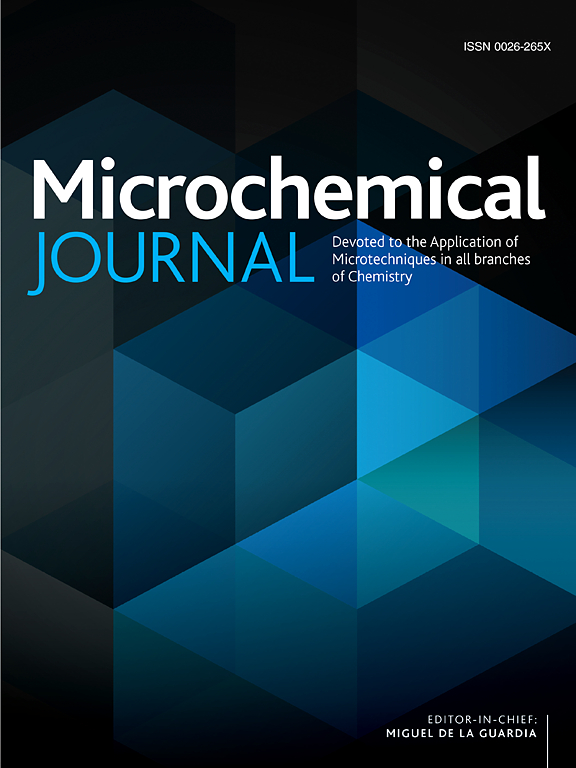Simultaneous determination of brinzolamide, timolol maleate and its oxidative degradation product using univariate and multivariate green spectrophotometric methods
IF 4.9
2区 化学
Q1 CHEMISTRY, ANALYTICAL
引用次数: 0
Abstract
Spectrophotometric methods utilizing ratio-spectra were validated for simultaneous determination of Brinzolamide (BRZ) and Timolol maleate (TM) in the presence of the oxidative degradation product of TM (TM deg). TM deg interference was eliminated by dividing the zero-order absorption spectra of TM and BRZ by a concentration 20.00 μg/mL of TM deg. The binary mixture was then analyzed via Method A which determined TM using a ratio difference spectrophotometric approach, where amplitude difference (ΔPA) of the TM spectra at 275.5 nm and 250.0 nm were used, as BRZ (ΔPA) was zero at these wavelengths. Method B involved adjusting the first derivative of the ratio spectra of BRZ and TM in order to determine BRZ selectively. When applying Δλ = 8, scaling factor = 10 and the maximum obtained at 243.8 nm, TM showed no contribution. Method C, involved dividing the total spectrum of the ternary mixture by a double divisor; the sum of the spectra of TM and TM deg. The amplitude of the first derivative of the resulting ratio spectra was measured at 243.7 nm to determine BRZ. Additionally, two multivariate methods, Partial Least Squares and Artificial Neural Networks were applied for determination of BRZ, TM and TM deg. Both models successfully determined BRZ, TM and TM deg. These methods were applied to analyze BRZ and TM in pharmaceutical formulations without matrix interference. Finally, the environmental sustainability of the proposed methods was evaluated. Two methods; National Environmental Methods Index and Eco-Scale assessment metric systems were utilized and revealed greenness of proposed methods.

使用单变量和多变量绿色分光光度法同时测定布林佐胺、马来酸噻吗洛尔及其氧化降解产物
本文章由计算机程序翻译,如有差异,请以英文原文为准。
求助全文
约1分钟内获得全文
求助全文
来源期刊

Microchemical Journal
化学-分析化学
CiteScore
8.70
自引率
8.30%
发文量
1131
审稿时长
1.9 months
期刊介绍:
The Microchemical Journal is a peer reviewed journal devoted to all aspects and phases of analytical chemistry and chemical analysis. The Microchemical Journal publishes articles which are at the forefront of modern analytical chemistry and cover innovations in the techniques to the finest possible limits. This includes fundamental aspects, instrumentation, new developments, innovative and novel methods and applications including environmental and clinical field.
Traditional classical analytical methods such as spectrophotometry and titrimetry as well as established instrumentation methods such as flame and graphite furnace atomic absorption spectrometry, gas chromatography, and modified glassy or carbon electrode electrochemical methods will be considered, provided they show significant improvements and novelty compared to the established methods.
 求助内容:
求助内容: 应助结果提醒方式:
应助结果提醒方式:


